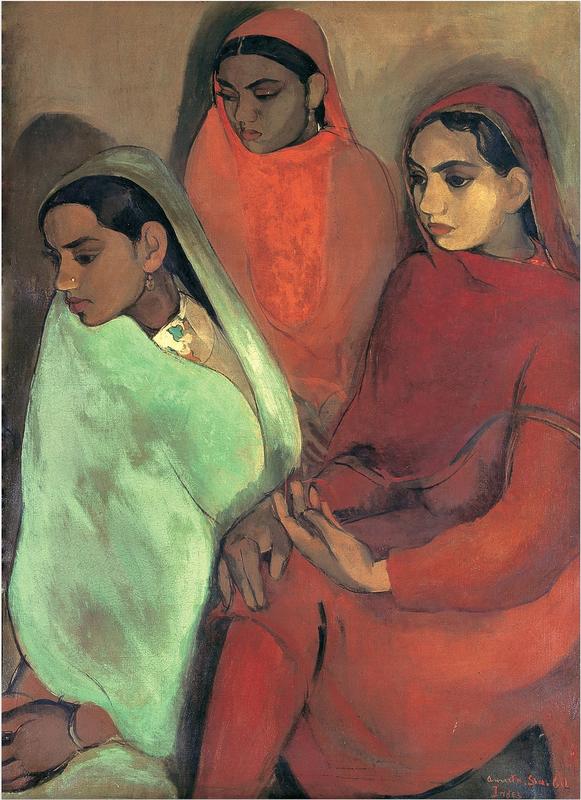More about Group of Three Girls
- All
- Info
- Shop

Contributor
Twos company, and these three girls are definitely a crowd.
Amrita Sher-Gil painted the Three Girls when she returned to India in 1934. She had been studying in Paris for the last five years and was looking for some new subject matter as she had grown tired of painting portraits of lovers, friends, and sisters. Amrita carried her loneliness with her to India. She was stuck between two worlds and she didn’t know which one was really hers. Her Hungarian mother and Indian father just magnified the odds. “Am I white? Am I Brown? Will Europe take me or will India?” She wanted to do something else for a while. It was probably the best decision of her life. This was the most inventive she had ever been. Three Girls was completed in 1935, the first in Sher-Gil’s India series. The girls in the painting were meant to echo her melancholy. They look in the same direction, all three of them, headed for the same destiny. They look exhausted, tired of fighting a future they weren’t going to win.
Amrita understood that she would always be an outsider. She would always feel alienated when she looked at the girls. She knew she was privileged. She was treated differently, she had freedoms these girls didn’t. Sher-Gil knew that she shared a bond with these women. Their quiet suffering was similar to hers. It seems this loneliness is a universal feature of the female condition.
All of this was happening in the same family. It turns out the girls were Amrita’s Uncle’s granddaughters, Beant Kaur, Narwair Kaur, and Gurbhajan Kaur. Amrita didn’t have to worry about a lot of things the Kaur sisters worried about. Amrita didn’t have to worry about being forced to marry a stranger at a young age. She worried about who she really was, and who was willing to accept her that way.
She painted them in Amritsar and had them sitting for her for over two to three works. They seemed to have remembered the experience fondly. The girls were painted at the Tennis Court in the Majithia House in Amritsar. Pre-independence private tennis courts in India were very strong indicators of wealth. While the rest of the country was reeling under British oppression, these landlords, and aristocrats, could catch a quick game of tennis. That is wealth.
Sources
- “Amrita Sher-Gil: An Artist Who Defied Norms.” Hindustan Times, July 15, 2019. https://www.hindustantimes.com/inspiring-lives/amrita-sher-gil-an-artis….
- “Group of Three Girls - Amrita Sher-Gil - Google Arts & Culture.” Google. Google, n.d. https://artsandculture.google.com/asset/group-of-three-girls/wwH6P_d83n….
- “Amritsar Sisters Posed for Painter Amrita's 'Three Girls'.” Hindustan Times, December 16, 2015. https://www.hindustantimes.com/punjab/amritsar-sisters-posed-for-painte….
- Stampdigest. “Three Girls by Amrita Sher-Gil.” Stamp Digest, April 20, 2018. https://stampdigest.in/2018/04/20/three-girls-by-amrita-sher-gil/.
Featured Content
Here is what Wikipedia says about Three Girls (painting)
Three Girls, also known as Group of Young Girls, is a painting by Hungarian-Indian artist Amrita Sher-Gil. It was painted in 1935 shortly after Sher-Gil returned to India from Europe in 1934. The painting won the Gold Medal at the annual exhibition of the Bombay Art Society in 1937. The painting was part of a batch sent to Nawab Salar Jang of Hyderabad who later rejected them all.
Check out the full Wikipedia article about Three Girls (painting)














Wonderful writing, Ba!